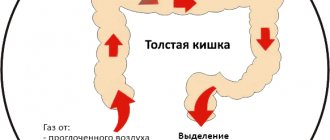Even 300 years ago, women gave birth to children differently than modern women do. There were no special gynecological and obstetric chairs, as well as special devices that could be used to facilitate the process of childbirth. Midwives helped the girls give birth. In this case, the woman was either in a standing position or squatting. This is how vertical childbirth took place. Today they also practice. In this article we will talk in detail about what vertical childbirth is with photos .
Childbirth in an upright position: what is it?
Vertical childbirth was carried out in all medieval European countries until Louis XIV abolished it. The fact is that the world-famous leader of France loved to watch women give birth in pain. The sitting position of the woman in labor at the time of expulsion of the fetus blocked the king’s entire view, so the doctors were forced to put the woman on her back.
Whether this is true or historical fiction is still not known for certain. But the fact is clear that in the last few years, many maternity hospitals have begun to return to the practice of performing vertical births, because in this process the uterus contracts faster and the child is born faster.
Thus, we can conclude that vertical birth is a normal delivery process in which the woman does not lie down, but either stands, sits, or is constantly in motion.
How is vertical birth performed?
Like horizontal childbirth, vertical childbirth takes place in 3 stages:
- Stage I – the woman’s cervix opens. This is the most painful period and the longest. It is very important that during this period the woman in labor moves more to stimulate the uterus to contract stronger and faster. You can walk, sit on a special ball, swim in the pool. In principle, many doctors now force the woman in labor to move during the entire first stage of labor and forbid her to lie down. This, of course, is very exhausting for the woman, but it allows her to shorten the duration of her labor. According to reviews from women who have experienced vertical birth, it is very difficult to survive the first stage of labor on your feet if there is no person nearby who can provide support.
- Stage II - the fetus comes out of the mother's womb. During this period of vertical childbirth, the doctor selects a comfortable position not only for the woman, but also in order to deliver the child. Usually the woman is seated on her haunches, on her knees, or on a special chair. If it becomes more difficult for the baby to come out in an upright position, the doctor can at any second put the woman in labor on her back to help the baby be born. But, as a rule, a woman’s sitting position on a special chair helps her relax so that the baby comes out of the womb softly and smoothly.
- Stage III is the expulsion of the placenta, which occurs quite quickly if the woman is in an upright position. At this moment, the new mother is already holding her child on her chest, who should take the breast in the very first minutes of her life.

pros
The way to give birth while standing differs from the free behavior of a woman who walks, stands up, takes a shower and swims until the uterus is completely open. This helps reduce the pain of contractions. When the birth takes place, the mother is on the bed on her knees with her back to the doctor. You should sit or half-sitting on the birthing chair. In the normal course of the process, the child is accepted and handed over to the mother. If medical intervention is necessary, the woman is placed in a horizontal position.
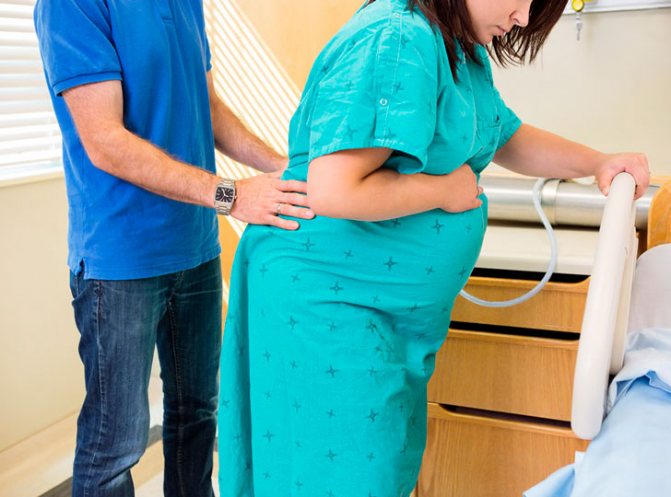
Positive features of childbirth while standing:
- comfortable natural body;
- reduction of pain;
- rapid opening of the cervix;
- short period of contractions;
- relief from pushing;
- preventing oxygen deficiency in the fetus;
- the baby smoothly passes through the birth canal;
- the risk of head injury is reduced;
- minimal rips;
- little blood loss.
If the woman in labor is in an upright position, the risk of hypoxia is reduced, the uterus does not interfere with the lungs, and it becomes easier to breathe. The painful period is reduced to two hours. You will not need to use painkillers. The coordinated work of the muscles of the abdominal wall and skeletal muscles is noted. Muscle tension is reduced, the birth canal is stretched and adjusted to the size of the head.
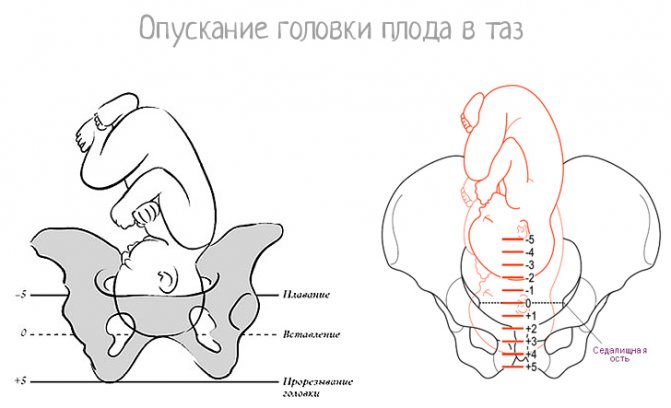
In this position, childbirth in a standing position is not suggested, but is recommended:
- for cardiovascular diseases;
- high myopia;
- risk of retinal detachment.
In most cases, a cesarean section is provided, so delivery in this way is an alternative. Subsequently, the child quickly develops. He has high Apgar scores, good weight dynamics, and psychomotor development. The benefits are noticeable only when the birth takes place without pathologies. If complications occur, the woman in labor is placed on the bed.
Vertical birth: preparation
To prevent vertical childbirth from exhausting a woman, she should prepare for it in advance:
- It is imperative to attend training courses for expectant parents, where pregnant women are taught how to breathe correctly during childbirth and relax the muscles, which, under the influence of the contracting uterus, begin to move apart strongly and resist the process of childbirth. Therefore, a woman often feels precisely this pain, and not that which is caused by severe uterine cramps.
- A woman should learn and try on herself all the positions that are usually used during vertical childbirth. She should know how to sway on a special fit ball, what rotations of the pelvis should be done while doing this, how to sit so that the muscles of the pelvic area relax as much as possible. If the expectant mother masters all this long before giving birth, she will be able to avoid the panic that envelops all women with the onset of contractions and ruptures of the perineum during pushing.
- You need to find a maternity hospital that practices vertical birth. After all, unfortunately, not all maternity institutions are equipped with the necessary medical devices so that a woman can give birth in a position that is comfortable for her. As a rule, maternity hospitals that perform vertical births do it free of charge .

- Agree with a doctor who has attended childbirths in which the woman was in an upright position for many years and a sufficient number of times. The experience of a specialist in this matter plays a decisive role. Even if there are no such doctors in your city, invite him to your birth or go to give birth where this obstetrician-gynecologist works. Not only your health, but also the health of the baby he will help be born will depend on his qualifications.
Vertical birth in a maternity hospital
Not every maternity hospital offers vertical birth. To give birth with benefits for the health of mother and child, it is necessary to look for a doctor and a medical facility several months before the important event. Such a maternity hospital requires the presence of a chair for vertical childbirth and a fitball (exercising on it will relieve muscle tension).
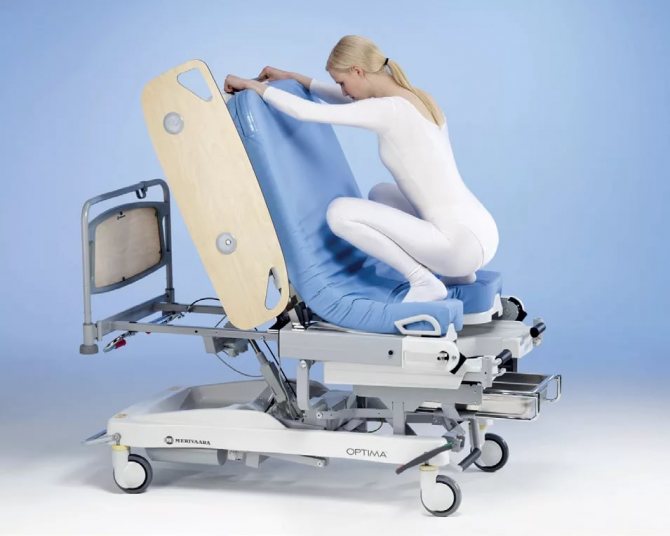
It is important that the woman takes an active position, then she herself will choose a comfortable position and will be able to adequately influence contractions. As a result, the expectant mother will not experience strong fear, which will relieve tension and create conditions for the most comfortable childbirth. Correct pressure of the baby's head on the uterus and its cervix reduces labor time, and the uterine os opens efficiently and quickly.
Pros of vertical birth
Now let’s take a closer look at why vertical childbirth is better than horizontal childbirth. There are several main advantages of this delivery process:
- During vertical birth, the uterus does not put as much pressure on the large blood vessels located in the abdominal cavity, so the baby can receive the amount of oxygen it needs. That is, the likelihood of hypoxia occurring during vertical birth is minimal.
- During vertical birth, the uterus opens smoother, more intensely and faster. A woman gives birth to a child much faster than with a horizontal birth. At the same time, the baby, moving along the birth canal of a woman who has taken a vertical position, will definitely not press on his head with hematomas and other neoplasms, which often happens during a rapid birth.
- Due to the fact that the uterus opens smoothly, a woman’s risk of internal and external ruptures is reduced. In this case, the baby requires much less energy to pass through the birth canal.
- During vertical labor, there is no heavy bleeding from the uterus during the expulsion of the placenta in the third period.

- A woman in labor can see with her own eyes, in an upright position, how her baby is born. With the first cry of her baby, she can already fully experience the happiness of motherhood and forget the torment that she had to go through to earn the right to be called a mother.
How does the baby come out?
When the woman in labor is sitting or standing, the fetus moves smoothly along the birth canal. As a result, the risk of injury is reduced for the child and woman. Thanks to vertical childbirth, the first stage of the baby’s birth is several hours shorter than with horizontal labor. The woman feels less pain, so there is no need to use unhealthy painkillers. The baby moves easily through the birth canal and requires minimal effort. The amount of blood loss is also reduced.
Today, vertical birth is not a common practice. Most women do not know that this option for having children exists. Many people think that giving birth lying on your back is the correct and only true option, but once you understand this topic a little, women are increasingly choosing to give birth in an upright position.
Video
Vertical birth: cons
Alas, vertical childbirth also has some disadvantages. Not all doctors today agree to deliver babies if a woman wants to give birth in an upright position. Why:
- A woman in labor at the first stage of labor cannot rest or sleep. Because of this, her strength is depleted, she can no longer be as active as necessary during the period of expulsion of the child from the womb.
- During vertical childbirth, the doctor is very limited in his movements, because he is forced to adapt to the posture of the woman in labor. Most modern gynecologists want to be in 100% control of the situation at the crucial moment of delivering a baby, but vertical birth is still a risk.
- If a woman begins to weigh a lot at the time of giving birth (as a rule, this is what happens), then under the pressure of weight she can strain tears in the perineum, as well as hemorrhoids, which will take a long time to heal.
- Vertical birth does not require the use of anesthesia. The woman will be forced to endure excruciating pain all the time, while, as with a horizontal birth, she can be given spinal anesthesia.

Contraindications
Not all couples risk giving preference to vertical childbirth, and not every department has special equipment. There is no chair designed for the delivery process. Among the disadvantages there are contraindications.
Complications during childbirth while standing:
- when a woman gives birth while standing, it is difficult to track how the baby moves and what rhythm the heart beats;
- the process occurs quickly, there is a threat of birth trauma;
- it is not possible to rest between contractions, so the labor time increases;
- with strong attempts, the risk of cervical and vaginal ruptures increases;
- there is no possibility of anesthesia;
- there are not enough specialists to perform births in a vertical position;
- it is more difficult to help when complications arise.
Since the risk of problems is high, not all doctors are ready to deliver babies this way. When an expectant mother gives birth while standing, it is difficult for her to find a comfortable position, despite the significant choice of positions. There are more advantages to carrying out the process of giving birth to a baby. The existing negative aspects threaten serious consequences for the health of the mother and fetus.
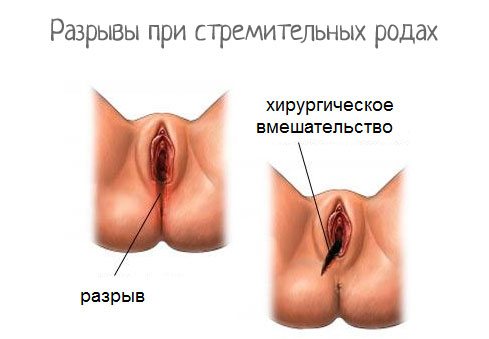
If a woman chooses to give birth while standing, she should familiarize herself with the contraindications in advance. The process is accompanied by complications, and medical assistance may be needed. Procedures can only be performed in a horizontal position.
Contraindications if birth is expected in a standing position:
- diseases of the heart and blood vessels;
- varicose veins;
- gestosis and its forms;
- fetal hypoxia;
- indications for surgical intervention;
- early onset of labor;
- narrow pelvis;
- the embryo is not positioned correctly;
- large child;
- rapid activity;
- chronic diseases;
- placenta previa.
This also includes the need to use forceps or dissect the perineum. You cannot risk the health of the baby and the mother herself if she has chronic diseases. Any of the points increases the likelihood of rapid labor. During epidural anesthesia, a woman will not be able to control her pelvis and limbs. It will be difficult for her to move.
With premature birth, the baby is too weak, and delivery most often occurs with complications. In order not to lose the fetus, the doctor controls the process when the woman is in a lying position. This allows for timely provision of medical care.
Vertical birth: contraindications
Sometimes doctors refuse to allow women to have vertical births, not because they see many contradictions in this process, but because they are simply contraindicated for the mother in labor. What is included in the prohibitions when no childbirth can be performed except horizontal:
- if a woman’s labor begins prematurely, then she should give birth only in a supine position (most likely, she will have a caesarean section);
- if the child does not lie with his head down, but, for example, with his legs or buttocks, then giving birth in a vertical position is also impossible;
- if a woman has a pathologically narrow pelvis, and the child is quite large, then she can only give birth lying down;
- If a woman is not a firstborn, then her second birth will proceed much faster than the first, so vertical ones can only do harm (lead to ruptures of the perineum).

If you are not one of the women who has contraindications for vertical birth, do not be afraid to take this step. Childbirth is in any case a difficult physiological process for a woman. And so, and so it will be painful. Think about what it’s like for a child moving through the narrow birth canal. Vertical childbirth is an opportunity to ease his suffering and bring the time of meeting the long-awaited baby closer.
When is vertical birth unsafe?
Indications for such a delivery are: a problem-free pregnancy, a healthy woman in labor, and the absence of pathological disorders in the mother and fetus. As with any other operation, there are certain conditions under which vertical delivery should not be performed. These include:
- difficult pregnancy with complications;
- gestosis;
- phlebeurysm;
- the presence of pathology or anomaly of the birth canal;
- premature birth, more about them in the article: “Threat of premature birth: causes, symptoms, treatment”;
- not cephalic presentation of the fetus;
- delay in intrauterine development of the fetus;
- narrow pelvis;
- rapid labor activity.









